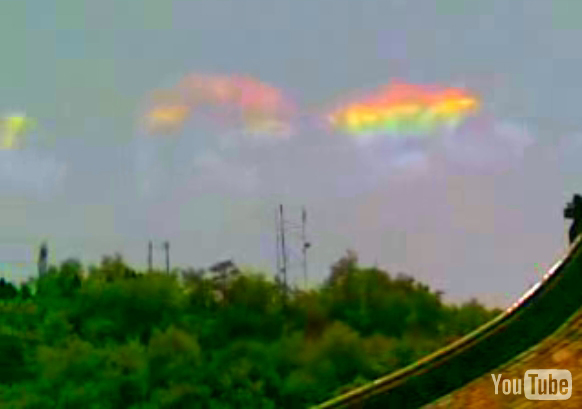— Strange Pre-Earthquake Phenomena —
Igneous and metamorphic rocks, which make up a major portion of the Earth s crust, contain electric charge carriers, which have been overlooked in the past. These charge carriers are defect electrons in the valence band, i.e., positive holes. Under normal conditions they are dormant, but when they wake up , the rocks begin to sparkle and glow . This paper describes the physical and chemical nature of these positive holes, how they are introduced into minerals and rocks, and how they become activated. Evidence will be presented that, once the positive holes are generated, currents propagate through the rocks leading to electromagnetic emission, to positive surface potentials, to corona discharges, to positive ion emission, and to mid-infrared radiation. These phenomena are expressions of the same fundamental process: the awakening of dormant positive hole char ge carriers that turn rocks momentarily into p-type semiconductors.
Electrical Conductivity of Rocks
At this point it is advisable to revisit the question of electrical conductivity of minerals and rocks.
Oxide and silicate minerals that make up the bulk of the igneous and high-grade metamorphic rocks in the Earth s crust are mostly good insulators. Except for sulfide minerals, which are often quite conductive, the only oxide mineral that shows an appreciable electronic conductivity is magnetite,
Fe3O4. In magnetite, Fe2+ and Fe3+ alternate on neighboring sites, allowing for Fe2+/Fe3+ valency fluctuations to delocalize over the cation sublattice and to thus conduct electricity (Stacey and Johnston 1972; Dieckmann 1986). All other rock-forming minerals, including silicate minerals that are rich in transition metals in different oxidation states, are non-conductors. If the minerals do not conduct electricity, the rocks, which they form, must also be considered good insulators, at least as long as they are dry.
There is yet another point that deserves attention. Because p-holes represent defect electrons in the valence band of O 2p-dominated oxide/silicate insulators, they propagate through the valence band. This, however, means that they will be able to spread from any place where they are generated to portions of the sample where they are not actively produced. It means that they will flow from one oxide/silicate material to the next. The only requirement is that there is a continuous path of grain- grain contacts along which the valence bands are connected. In some way, the propagation of p- holes through an insulator or an ensemble of mineral grains in a rock resembles the propagation of electrons through metal or through different pieces of metal that are in electric contact.
These hopeful words should not hide the fact that, until now, the geoscience community at large has not accepted the notion that p-holes exist in minerals and rocks, and that they may have a profound effect on many properties of these materials and on processes of general geological and geophysical interest. There are several causes for the widespread resistance.
Published information about p-holes, in particular about their contribution to the electrical conductivity of minerals and rocks, is still scarce. This is largely due to the fact that the peer review system often creates near-insurmountable hurdles against the publication of data that seem contrary to long-held beliefs. Most editors of mainstream science journals are themselves part of the mainstream circle. Hence, in cases of adversarial comments from mainstream reviewers, they tend to lean to the safe side and reject manuscripts submitted for publication.
For over a hundred years geoscientists have been trained to think of oxygen anions in natural materials as O2- and nothing but O2-. To introduce O- as a new variant, but at the same time point to the fact that O- is not an ion but an electronic state with unusual properties, most appropriately discussed within the framework of semiconductor physics, requires a level of rethinking for which most geoscientists are ill-prepared.
Lastly, once fully told and understood, the story of p-holes is basically so simple that many mainstream geoscientists are left to wonder why it has taken so long for them to be discovered. If they are so ubiquitous as they appear to be, why did p-holes go unnoticed for over a hundred years? Confronted with this question, by a twist of logic, many mainstreamers succumb to the impulse to reject the p-hole concept out of hand.
The difficulties encountered in the connection with p-holes are similar to others that have punctuated the history of science. The discovery of the p-holes as dormant, yet powerful charge carriers in the Earth s crust calls for a new paradigm in earthquake research and beyond. More often than not, any call for a new paradigm elicits opposition. Therefore, I close with a quote from the philosopher Arthur Schopenhauer who ventured to say: All truth passes through three stages. First, it is ridiculed. Second, it is violently opposed. Third, it is accepted as being self-evident.
Earthquake lights, 12 May 2008, Sichuan China
.
Note the similarity of colors to the Woodchuck Hill lights of 1985 which were reported as being "yellow-orange."

